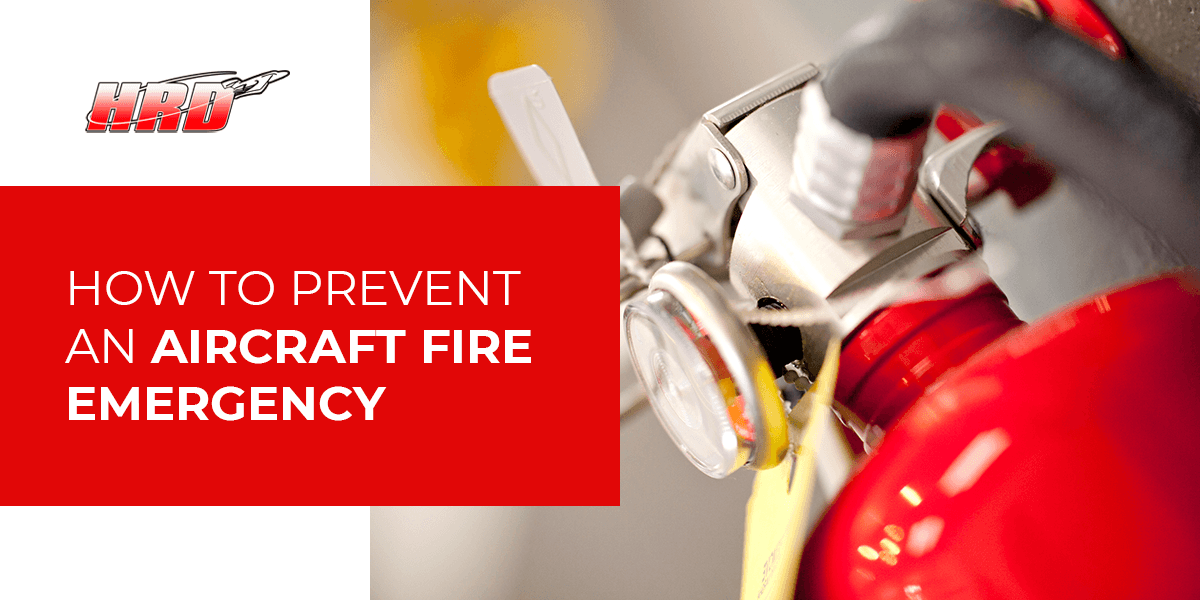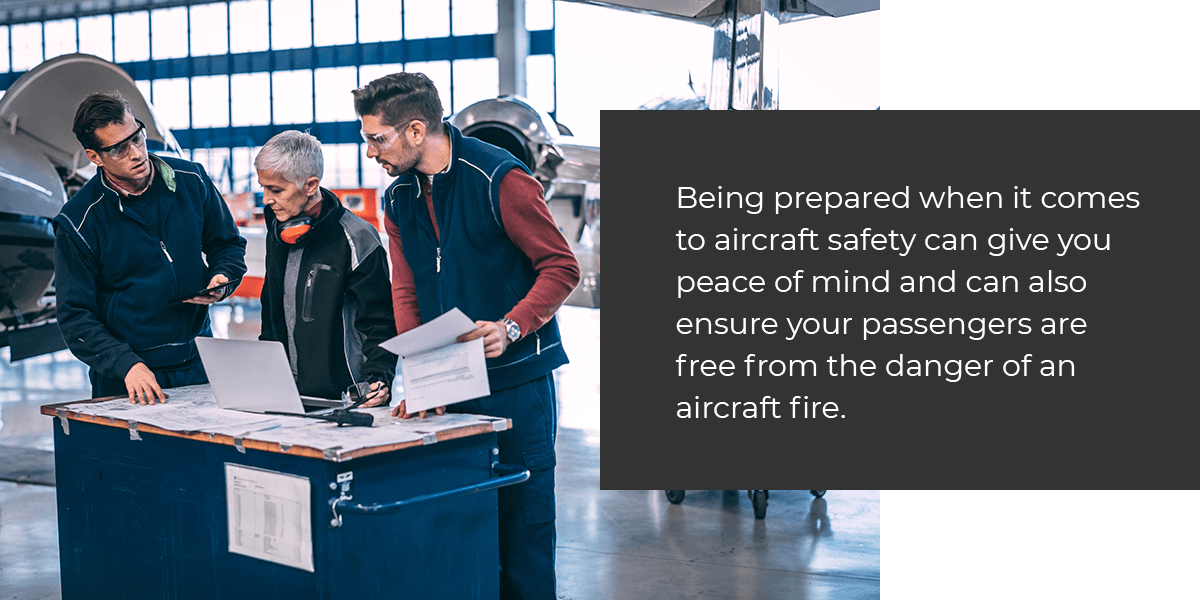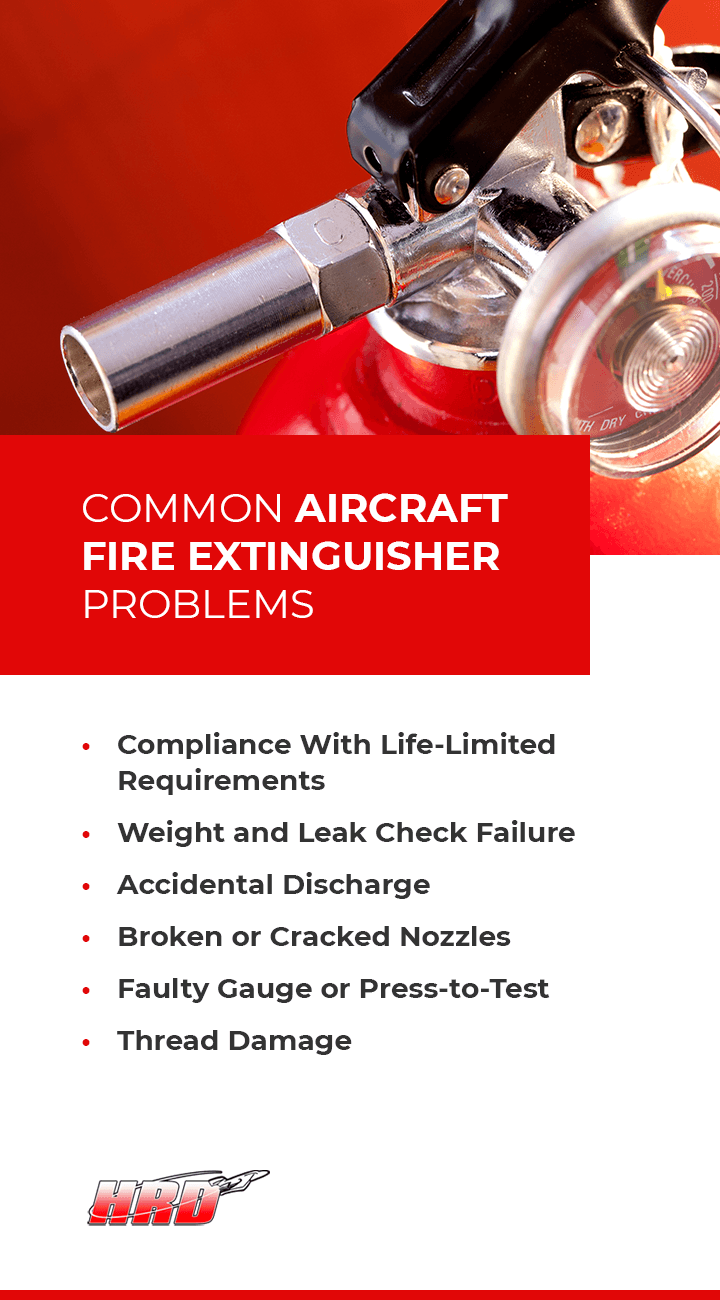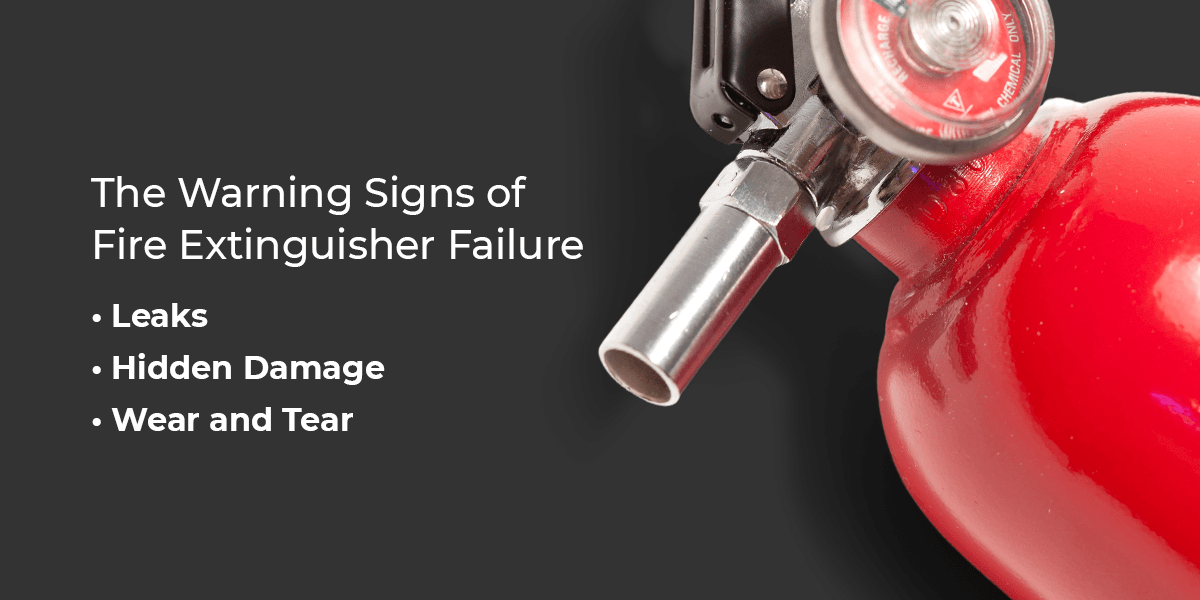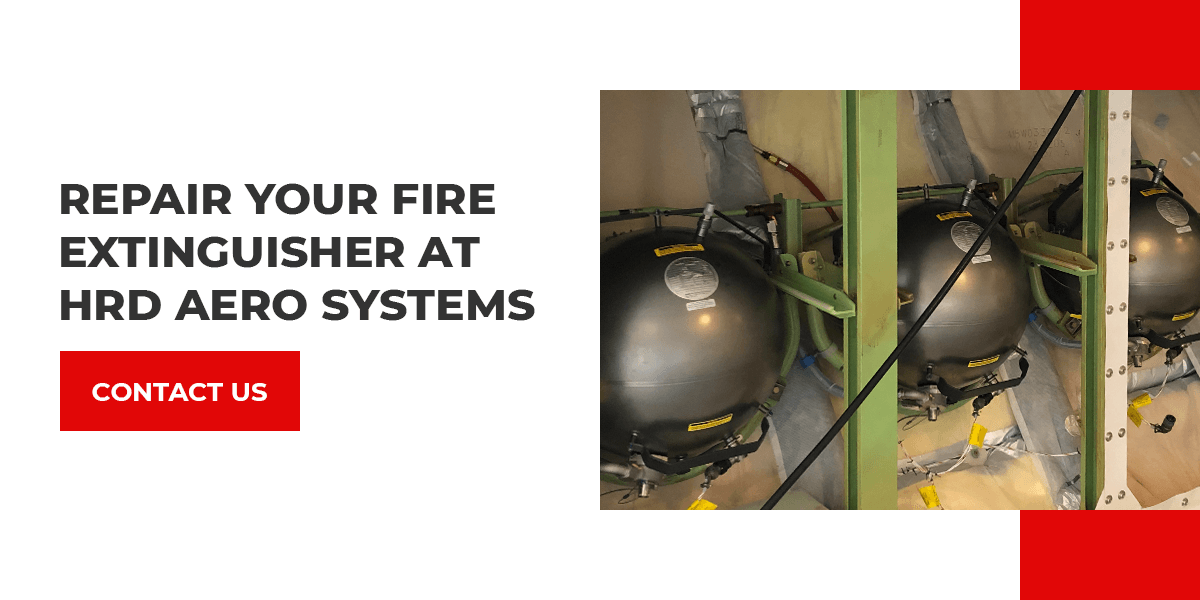How to Prevent an Aircraft Fire Emergency
As someone in the aviation industry, you understand how critical safety measures can be. Fire extinguishers are part of your aircraft safety measures, so it’s key to keep them in proper working condition. Doing so can ensure safety on your aircraft and for your passengers and cargo.
Understand how to prevent an aircraft fire emergency by learning potential fire extinguisher concerns and how often to have your fire suppression systems inspected.
The Importance of Safety on Aircrafts
The most effective safety practices are imperative on an aircraft. Part of creating a safe environment is having the right tools, and fire extinguishers are a must-have on an aircraft. On average, an aircraft has 3,300-8,400 kilograms of combustible materials, which is a large amount of materials considering that small spaces like aircraft hold in heat. This holding in of heat then causes a fire to be more severe.
Being prepared when it comes to aircraft safety can give you peace of mind and can also ensure your passengers are free from the danger of an aircraft fire.
Common Aircraft Fire Extinguisher Problems
It’s important to know the most common problems that arise with fire extinguishers to gain an accurate understanding of when to get your fire extinguisher repaired and how to approach getting the services you need.
Compliance With Life-Limited Requirements
All fire extinguishers have a service interval and some have a life limit. If you’re not sure how old your fire extinguisher is and unsure of the service interval or life limit, the best thing you can do is contact a professional service center for clarification. They will let you know if it is still safe to use and when you should consider sending it in for inspection.
Weight and Leak Check Failure
The charged weight of your fire extinguisher from it’s last service or when manufactured will be in writing on a tag on the fire extinguisher. When conducting a weight check on your fire extinguisher, you must follow the Component Maintenance Manual (CMM) requirements in order to determine what components are included in the total weight.
If your bottle is below the weight listed on the tag, it’s a good indication there is a leak. A leak can be verified through a halon leak detector or using leak detecting liquid solution. If the bottle fails the required weight check it should be sent in to a professional for service.
Accidental Discharge
Most common accidental discharges happen when fire extinguishers are improperly stored or mishandled. High temperatures can cause the safety reliefs to burst, releasing the contents of the fire extinguisher. Some examples of mishandling are: dropping, squeezing the trigger, or electrostatically discharging the cartridge. It’s important all non-portable fire extinguishers have the proper safety caps installed to prevent them from turning into a dangerous high pressure projectile in the event of an accidental discharge.
Broken or Cracked Nozzles
Inspect your fire extinguisher often for visible signs of damage. If your fire extinguisher has a broken or cracked nozzle, it’s time to have a professional repair it. Simply recharging it will not help you when the time comes to use your fire extinguisher. A broken or cracked nozzle may lead to the agent inside the fire extinguisher not being able to spray properly onto a fire.
Faulty Gauge or Press-to-Test
The gauge on your fire extinguisher tells you if the bottle contains the proper amount of pressure to work. If the gauge does not indicate the required pressure your bottle could be leaking or the gauge is faulty.
Some fire extinguishers have a Pressure Switch in place of a gauge. The pressure switch sends an electric signal to the cockpit, indicating that the fire extinguisher is properly charged. Any time the pressure switch indicates low pressure in the fire extinguisher, it should be removed and sent to a professional for service. Even if the weight check is performed and the fire extinguisher weighs correctly, the pressure switch could be faulty, requiring replacement.
Thread Damage
When the cylinder or shell threads of a fire extinguisher appear damaged, you should not operate the fire extinguisher. When you schedule a routine service check for your fire extinguisher, the professional that assists you will make sure any threads in your fire extinguisher are clean and have no signs of obvious damage or corrosion.
During periodic service of engine, cargo, or APU fire extinguishers, the threads should be checked for damage to ensure the unit can be properly installed to the aircraft plumbing. Thread damage could prevent proper sealing, resulting in a leak when the fire extinguisher is discharged or not extinguishing the fire.
The Warning Signs of Fire Extinguisher Failure
The warning signs of fire extinguisher failure aren’t always obvious, which is why it’s important to schedule your aviation fire extinguisher for regular maintenance. However, obvious signs of fire extinguisher failure exist, as well, which are just as important to be aware of.
Leaks
You may not always be able to see a visible leak on a fire extinguisher. One way to detect if your fire extinguisher is leaking is by checking the pressure gauge. What the pressure gauge should read depends on the type of fire extinguisher you have. Some fire extinguishers will simply have a gauge with a needle that points to a green area rather than a red area when the extinguisher itself is pressurized enough.
Hidden Damage
Corrosion is a natural process that results in the degradation of refined metals, which means that with corrosion comes the risk of leaks. Another consequence of corrosion on the outside of your fire extinguisher is the appearance of rust, which may render any of the important components of your fire extinguisher inoperable. Corrosion can also happen on the inside of a fire extinguisher, but it’s difficult to detect unless you have a professional look at the fire extinguisher.
Wear and Tear
Dents in your fire extinguisher’s cylinder may indicate that the fire extinguisher itself has lost it’s structural integrity. This can be dangerous as the fire extinguishers contain high pressures and can act as a bomb in extreme cases. Similarly, if the other components of your fire extinguisher have dents or other visible deformities, this may indicate these components won’t function properly, rendering your fire extinguisher inoperable. Any dented fire extinguisher should be removed from operation and sent in for service immediately.
When and Where to Have Your Fire Extinguisher Serviced
When and where to have your fire extinguisher serviced or repaired is important to know because a fire extinguisher needs to be reliable every day it’s in service on an aircraft, in storage, or transportation.
Routine Maintenance
Make sure you get your extinguisher serviced from a reputable repair station that follows the Component Maintenance Manual (CMM). If you are unsure of what routine maintenance should be performed contact your service provider.
According to Department of Transportation (DOT) guidelines, frangible or hermetically sealed fire extinguishers need to be checked by a professional every five years. The DOT requires these units to be re-hydrostatically tested to ensure the integrity of the cylinder.
Repairs
It’s important to get your fire extinguisher repaired immediately if it is showing any warning signs of failure.
HRD Aero Systems
HRD Aero Systems has over 35+ years experience and trained professionals with expertise on major brands and manufacturers, such as Pac Sci/HTL/Meggitt, Kidde, Mass Systems and L’Hotellier.
We want you to be as confident as we are in our services, which is why we stay current with aviation authorities and have obtained the following certifications:
- Federal Aviation Administration (FAA)
- European Union Aviation Safety Agency (EASA)
- DOT
- Egyptian Civil Aviation Authority (ECAA)
- Civil Aviation Authority of Thailand (CAAT)
- International Traffic in Arms Regulations (ITAR)
- TAG/AMS, Inc.
- DOT-FAA Drug Program
Repair Your Fire Extinguisher at HRD Aero Systems
When you bring a fire extinguisher in need of repair or servicing to us, you can rest assured that all replacement parts follow FAA/EASA guidelines.
We believe that repairs on safety products should be affordable and reliable, which is exactly what you can expect our services to be for the following types of fire extinguishers:
- H2O portables
- Halon 1211 portables
- CO2 systems
- Halon 1301 engines, cargo systems and auxiliary power units
Navigate to our website and search for the parts we have in stock and if you don’t see what you’re looking for please contact us and we can help source it for you.
HRD Aero Systems also provides services for oxygen systems, inflatables and air transportation containers.
Find all of our methods of contact here or give us a call at 1 (877) 473-2376. We’re here to answer any questions you have.

